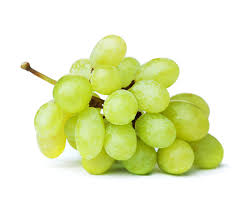Se-tenant: Stamp Day 1966 (Hungary 1966)
Stamp Day 1966 (Hungary 1966)
16 September (Hungary ) within release Stamp Day goes into circulation Se-tenant Stamp Day 1966 face value 8+2 Hungarian forint
| Se-tenant Stamp Day 1966 in catalogues | |
|---|---|
| Michel: | Mi: HU 2271A-2274A |
| Yvert et Tellier: | Yt: HU 1861-1864 |
Se-tenant is horizontal format.
Also in the issue Stamp Day:
- Stamp - 39th Stamp Day - Woman archer face value 2+0.50;
- Stamp - 39th Stamp Day - Grape and lake Balaton face value 2+0.50;
- Stamp - 39th Stamp Day - Poppies and Diósgyőr Castle face value 2+0.50;
- Stamp - Russian Space Dogs (Canis lupus familiaris) face value 2+0.50;
- Souvenir Sheet - 39th Stamp Day face value 8+2;
- Mini Sheet - Stamp day 1966 face value 20*(2+0.50);
- Se-tenant - Stamp Day 1966 face value 8+2;
- Stamp - Stamp day 1966 face value 2+0.50;
- Stamp - Stamp day 1966 face value 2+0.50;
- Stamp - Stamp day 1966 face value 2+0.50;
- Stamp - Stamp day 1966 face value 2+0.50;
- Stamp - Stamp day 1966 face value 2+0.50;
- Stamp - Stamp day 1966 face value 2+0.50;
- Stamp - Stamp day 1966 face value 2+0.50;
- Stamp - Stamp day 1966 face value 2+0.50;
- Se-tenant - Stamp Day 1966 face value 4*(2+0.50);
Se-tenant Stamp Day 1966 it reflects the thematic directions:
Animals are multicellular, eukaryotic organisms of the kingdom Animalia (also called Metazoa). All animals are motile, meaning they can move spontaneously and independently, at some point in their lives. Their body plan eventually becomes fixed as they develop, although some undergo a process of metamorphosis later on in their lives. All animals are heterotrophs: they must ingest other organisms or their products for sustenance.
The domestic dog (Canis lupus familiaris or Canis familiaris) is a member of genus Canis (canines) that forms part of the wolf-like canids, and is the most widely abundant carnivore. The dog and the extant gray wolf are sister taxa, with modern wolves not closely related to the wolves that were first domesticated. The dog was the first domesticated species and has been selectively bred over millennia for various behaviors, sensory capabilities, and physical attributes. Their long association with humans has led dogs to be uniquely attuned to human behavior and they are able to thrive on a starch-rich diet that would be inadequate for other canid species. Dogs vary widely in shape, size and colours. Dogs perform many roles for people, such as hunting, herding, pulling loads, protection, assisting police and military, companionship and, more recently, aiding handicapped individuals. This influence on human society has given them the sobriquet "man's best friend".
A flower, sometimes known as a bloom or blossom, is the reproductive structure found in plants that are floral (plants of the division Magnoliophyta, also called angiosperms). The biological function of a flower is to effect reproduction, usually by providing a mechanism for the union of sperm with eggs. Flowers may facilitate outcrossing (fusion of sperm and eggs from different individuals in a population) or allow selfing (fusion of sperm and egg from the same flower). Some flowers produce diaspores without fertilization (parthenocarpy). Flowers contain sporangia and are the site where gametophytes develop. Many flowers have evolved to be attractive to animals, so as to cause them to be vectors for the transfer of pollen. After fertilization, the ovary of the flower develops into fruit containing seeds. In addition to facilitating the reproduction of flowering plants, flowers have long been admired and used by humans to beautify their environment, and also as objects of romance, ritual, religion, medicine and as a source of food.
A grape is a fruit, botanically a berry, of the deciduous woody vines of the flowering plant genus Vitis. Grapes are a non-climacteric type of fruit, generally occurring in clusters.
Philately (/fɪˈlætəli/; fih-LAT-ə-lee) is the study of postage stamps and postal history. It also refers to the collection and appreciation of stamps and other philatelic products.While closely associated with stamp collecting and the study of postage, it is possible to be a philatelist without owning any stamps. For instance, the stamps being studied may be very rare or reside only in museums.
Flora is the plant life occurring in a particular region or time, generally the naturally occurring or indigenous—native plant life. The corresponding term for animal life is fauna. Flora, fauna and other forms of life such as fungi are collectively referred to as biota. Sometimes bacteria and fungi are also referred to as flora, as in the terms gut flora or skin flora.
Sport is a form of physical activity or game. Often competitive and organized, sports use, maintain, or improve physical ability and skills. They also provide enjoyment to participants and, in some cases, entertainment to spectators. Many sports exist, with different participant numbers, some are done by a single person with others being done by hundreds. Most sports take place either in teams or competing as individuals. Some sports allow a "tie" or "draw", in which there is no single winner; others provide tie-breaking methods to ensure one winner. A number of contests may be arranged in a tournament format, producing a champion. Many sports leagues make an annual champion by arranging games in a regular sports season, followed in some cases by playoffs.







